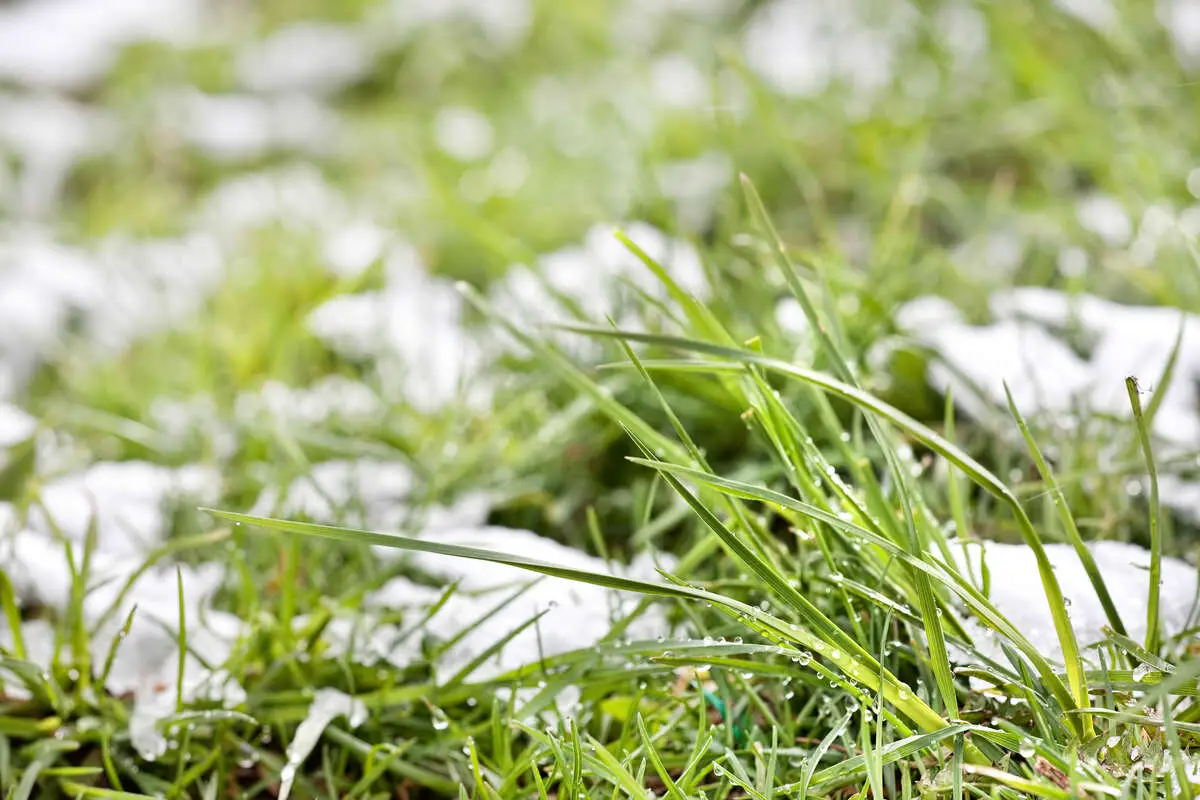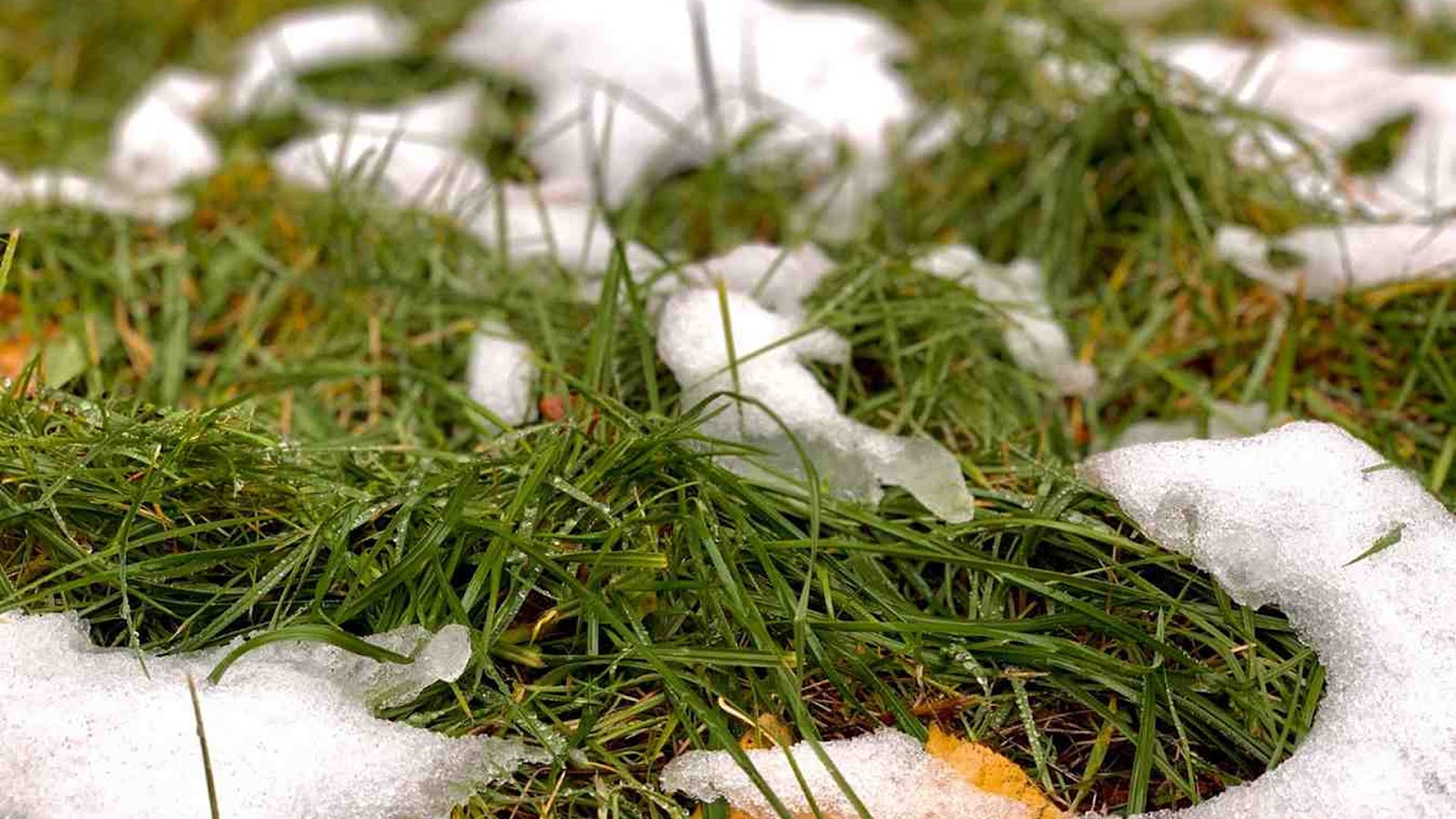What to Do With Your Lawn After Winter
Last Updated on September 28, 2025 by Duncan
In this post, we’ll discuss the things you should do after winter, including any steps you can take to assist your lawn recover. We’ll also discuss the steps that should have been completed before winter to better prepare your grass for next year.
Some of the things you should do include:
Apply the right materials in spring
As the new season begins, you should ensure that your lawn receives necessary early spring fertilizer and weed control sprays.
Early fertilization treatments supply your grass with the nutrition it requires when it emerges from hibernation and resumes active growth.
It is also critical that you do not miss the opportunity to apply pre-emergent measures in the early spring to prevent crabgrass. To work properly, apply this chemical in the early spring, before crabgrass germinates.
This is because crabgrass pre-emergents establish a barrier that precludes germination in the first place. You don’t want to miss out on this window of opportunity for effectiveness.
After all, you don’t want your lawn to emerge out of dormancy just to be overrun by crabgrass. This is an important moment to focus on prevention.
Water your lawn in the Spring mornings
While spring is typically a rainy season, you should monitor how much water your lawn receives from rainfall. You can use a rain gauge for this purpose.
Lawns require one to two inches of constant watering per week. If Mother Nature does not provide enough, you can supplement by watering in the morning.
Morning is the greatest time to water since it gives the lawn enough time to dry out and absorb as much water as possible before it evaporates. However, it also prevents excess water from remaining on your lawn overnight, which can lead to turf disease.
Seed your lawn in the fall
Finally, even if you are at the beginning of a new season, it is critical to plan ahead. If there are any barren areas in your lawn after the winter, you’ll need to seed them.
While this is the case, you should avoid sowing the grass in the spring for several reasons.
For starters, sowing in the spring prevents you from applying crabgrass control agents. Crabgrass pre-emergent treatments kill new grass.
At the same time, sowing in the spring can be difficult because the hot, dry season is quickly approaching. Summer is the most challenging season for fresh grass to develop, and it may not survive the heat.
Instead, prepare for aeration and overseeding in the fall. If you have dead grass after winter, waiting until the fall to seed can seem like a long time. However, it is critical to trust the process.
Don’t waste time and money sowing in the spring. You don’t want to wind up with a lot of crabgrass in your lawn because you didn’t deal with it properly.
As previously said, the fall is also a crucial period for spring grass care since you should apply “winterizer.” That final fertilizer application will help prepare your grass for success the following season.
Mow a little higher
As your lawn wakes up and begins to develop again, you’ll be able to resume your regular mowing schedule.
Mowing can be stressful for the lawn, especially when it initially comes out of dormancy. This is why you’ll probably want to ease into your mowing habit and begin by “mowing high.”
It goes without saying that the shorter you mow the lawn, the more stress you place on it. To be on the safe side, avoid mowing the lawn too short. Unfortunately, this is especially necessary at times of extreme stress (such as drought or emergence from dormancy).
For a great experience, always mow your grass with sharp blades and a flat mowing deck.
Aim to control the weeds as early as possible
Weeds can spread in your struggling lawn before it has a chance to grow. Look for weeds emerging in areas where the grass is thin or just starting to grow. You should remove the weeds promptly before spring.
Some homeowners disregard weed problems at the start of the season, preventing new grass growth and making their lawn look patchwork. Furthermore, once they have established roots, they become tough to remove.
So, if you notice any winter weeds growing in your lawn, pluck them, dig out the roots, or use weed killer to keep them from hurting your grass.
Aerate the soil
Soil is important for lawn health. Heavy snow in the winter can compact your grass soil, and thatch can exacerbate the situation.
Grass in compacted soil cannot absorb enough nutrients to grow robust roots. You need to assess the state of your soil; if it is densely packed, clay-like, or exceedingly dry, it need aeration.
Aeration loosens the soil and increases drainage, letting it to breathe and deliver water and nutrients to your roots. Aerate with a hand spike aerator or a machine. The aerator generates microscopic holes in the earth, allowing the soil to relax and prepare for future growth.
Remove any winter debris
After assessing the winter damage, the first and most important thing to do with your lawn is to carefully clean it and make sure it is free of debris.
Winter can leave your lawn covered in dead leaves, twigs, and other debris. Once the earth has thawed, brush up all of the debris so your grass can breathe and grow anew.
Dead leaves and branches hold too much moisture, which can result in fungal disease. Plant waste also provides a habitat for hazardous insects, which can further damage your lawn. In the spring, leaves, branches, and other debris can clog drainage and prevent new growth.
By removing any debris, you ensure that your lawn is free to continue with growth.
Overseed the bare spots
Overseeding is the most effective approach to rejuvenate a thinning, barren, or dead lawn. Snow and freezing temperatures can leave bare patches on your lawn. Overseeding will repair the damage and replace barren spots with lush green grass, restoring your lawn to its former splendor.
Use high-quality seeds that are best suited to your soil and environment. Here’s how to overseed or reseed your grass.
- Remove any weeds and dead grass from the areas.
- Aerate the soil sufficiently to make it loose.
- Spread a thin layer of compost throughout the area. Use a rake or tiller to work it into the soil.
- Cover the bald area with seed, either by hand or using a spreader.
- After sowing, rake the seeds into the soil.
- Water newly sown seeds.
Parting shot
With these post-winter lawn care recommendations, you can awaken your grass from hibernation and restore it to a green, healthy state. The most important thing to remember about lawn maintenance is to be patient.
You must allow your yard adequate time to thrive. Spring temps may entice you to get your hands in the dirt, but the earth must thaw and dry before you can work on it.
It can take anything from a few days to weeks for the soil to dry, depending on your zone and the winter you had.


